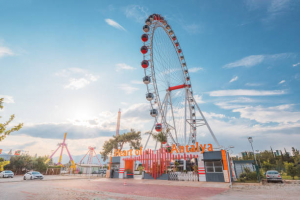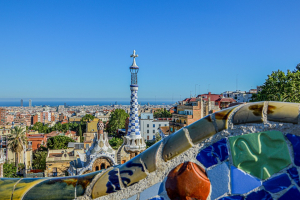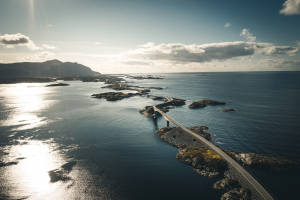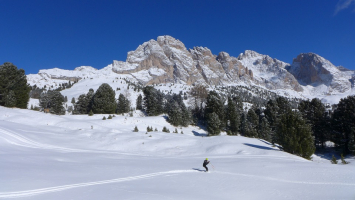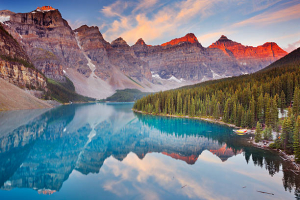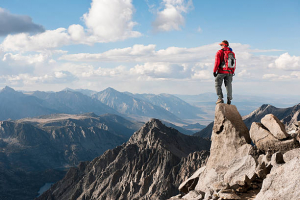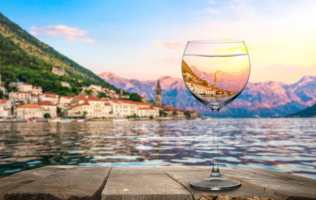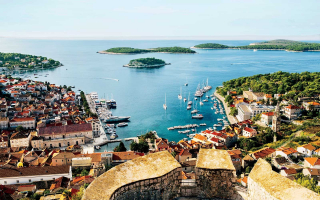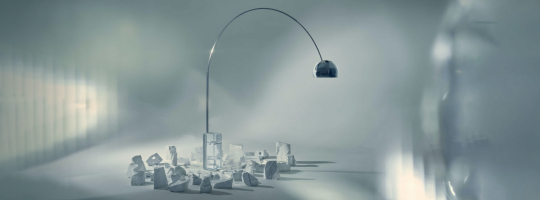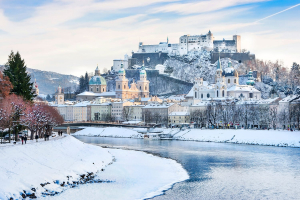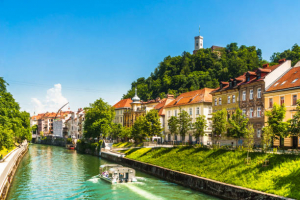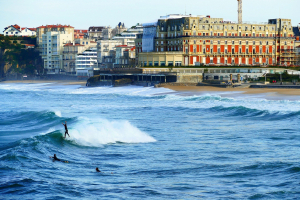Top 9 Best Natural Pools in Europe
Everyone wants to go away from home and go on vacation. Some people prefer to relax in the sun, while others want to go sightseeing or try something new. In ... read more...this post, let's find down Europe's most magnificent natural pools. Discover Europe's most gorgeous natural swimming pools, whether deep blue or emerald, green. Whatever way you wish to spend your summer, you can fit at least one of them in.
-
Croatia has a great environment where people may swim and have fun doing strange and interesting things. This is Krka National Park, which is famous for its waterfalls and gorgeous river. The most notable characteristic of Krka is that visitors may dive in the crystal blue waters, unlike at the Plitvice Lakes, where swimming is prohibited. In addition to its beautiful waterways, Krka National Park is home to a diverse range of flora and animals, as well as a number of cultural sites.
Furthermore, the park is significantly less busy than the nearby Plitvice Lakes. The park is well-known for its waterfalls, notably the popular Sradinski Buk. It boasts 17 cascades of varying proportions that run into an emerald pool where visitors can swim to their hearts' content. The Roki Slap is a smaller and more peaceful waterfall in Krka National Park. It is worth mentioning that the park is a protected region with abundant biodiversity, including 20 different types of fish. Krka National Park also has endangered European species including as wildcats, wolves, and otters. There are also cycling and hiking routes, as well as educational institutes, throughout the park.
Krka National Park is tiny, and visitors may see the main features in a single day. This is why visitors are advised to purchase a one-day park pass. Those who want to discover everything the park has to offer must purchase the multiple admission ticket, which enables admittance to the park for seven days and from three separate entries. It is advisable to grab the official booklet of Krka National Park and look at the ten possible routes to the many attractions in the park, which include boating, driving, hiking, and bicycling.
Location: Croatia
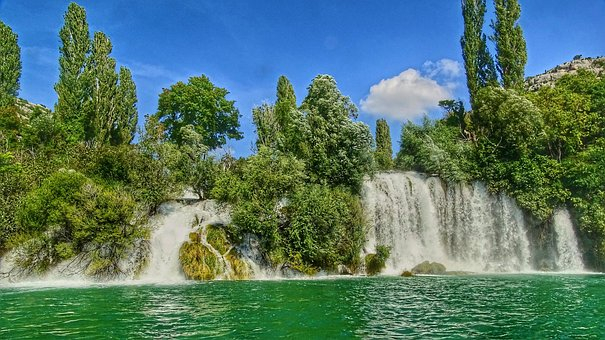
Photo by Goran fjaka on Pixabay 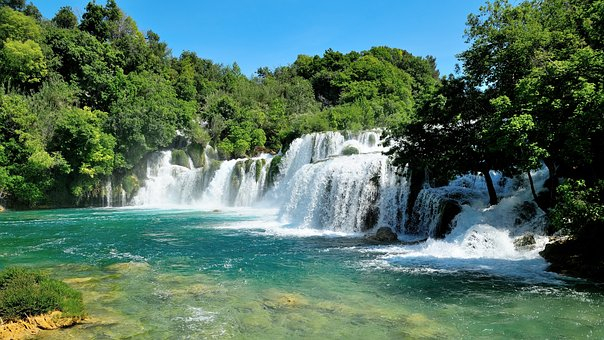
Photo by neufal54 on Pixabay -
Saturnia in Italy is particularly well-known for its hot springs, which are regarded as a great highlight of southern Tuscany. These thermal springs are great for soaking in sulfurous water, which has been rising up from the soil for 3,000 years and is recognized for its curative properties. The gorgeous waterfall Cascate del Mulino, with its turquoise blue pools of steaming white sinter spas, is unique in this area and creates a breathtaking natural background. Visitors from all over the world come to appreciate the breathtaking surroundings. The enormous Saturnia Bath, a great thermal bath with a nice hotel, lies next to this natural spa.
In addition to the luxury Thermal Hotel, Saturnia has various agritourism lodgings. The Agriturismo D'Epoca La Marianella is highly recommended. The Saturnia Hot Spring, the river, and the spectacular waterfall are all absolutely free to see. There are also two enormous parking areas directly adjacent to it that are free to use. Saturnia Hot Springs are well worth a visit! And you should absolutely remain a few days in this area to visit other attractions like Pitigliano, Sorano, and Sovana! . Saturnia may be visited all year. Early morning, throughout the week, and outside of vacations are the best times to experience the hot springs without crowds.
The Saturnia Hot Springs are located in Maremma, in the province of Grosseto, close to the city of Pitigliano. The thermal baths are around 5 kilometers away from Saturnia, a little village of 600 people. These hot springs are sulfur springs, and their 37.5 °C temperature promises a relaxing bathing experience. Every second, 800 liters of high-mineral-content water gushes out of the soil from the Monte Amiata slopes, roughly 30 kilometers distant.
Location: Italy
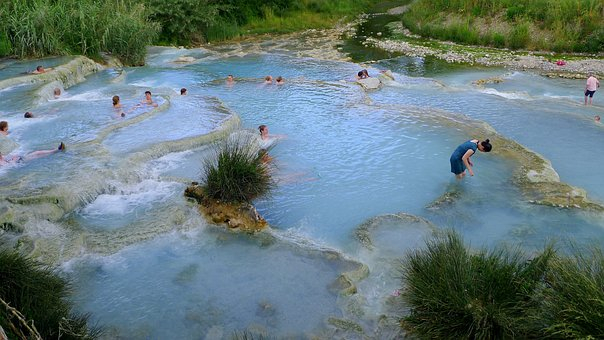
Photo by evondue on Pixabay 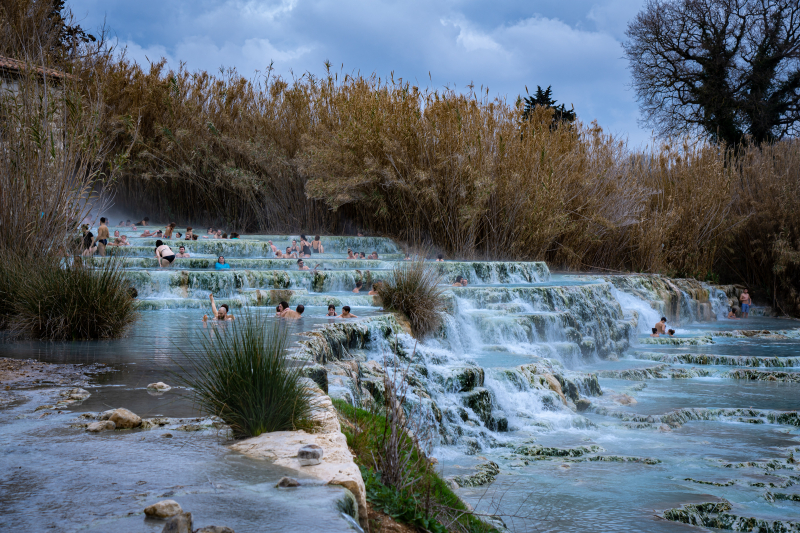
Photo by Alexis rodriguez on Unsplash -
Natural pools have their own type of enchantment; the beauty and charm of these locations are difficult to replicate artificially. According to National Geographic, the "Cave of Poetry" in southern Apulia is one of the world's ten most beautiful natural pools. It is surrounded by a stunning rocky terrain and the brilliant blue waters of the Adriatic Sea, ensuring an excellent swimming experience.
Grotta della Poesia is about 30 minutes away from Lecce. The picturesque natural pool is part of the Roca Vecchia archeological complex. The access is absolutely free, although the location is a little concealed and not marked on the streets; yet it can readily identify using Google Maps. If you prefer a tranquil and private swimming experience, arrive before 10 a.m., as it tends to get somewhat crowded after noon. In reality, the cave is great not only for a tranquil swim in a lovely and unique atmosphere, but also for adrenaline addicts. The pool's water is deep enough that many courageous water enthusiasts can leap over the cliff right into the crystal-clear waves! Some bold leaps are even rewarded by the crowd with "impressed level" applause in the afternoon when there are more people.
While at Grotta della Poesia, keep in mind that there are no sunbeds or direct access to a sandy beach. Fortunately, the neighborhood not only has an excellent natural pool, but it is also extremely near to a beautiful beach panorama. Torre dell'Orso's beautiful beaches are merely a 10-minute drive away. This beach portion is regarded as one of the most beautiful in Puglia, with white, sandy beaches, clean water, and spectacular cliffs rising from the sea. There are also various loungers, restaurants, day bars, and water sports.
Location: Italy
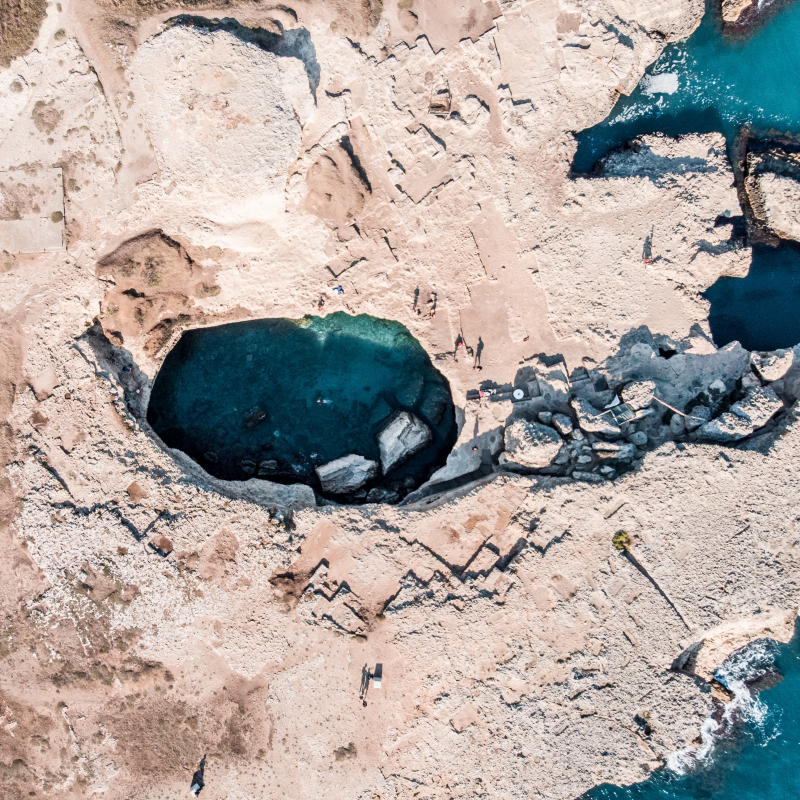
Photo by Giulia Gasperini on Unsplash 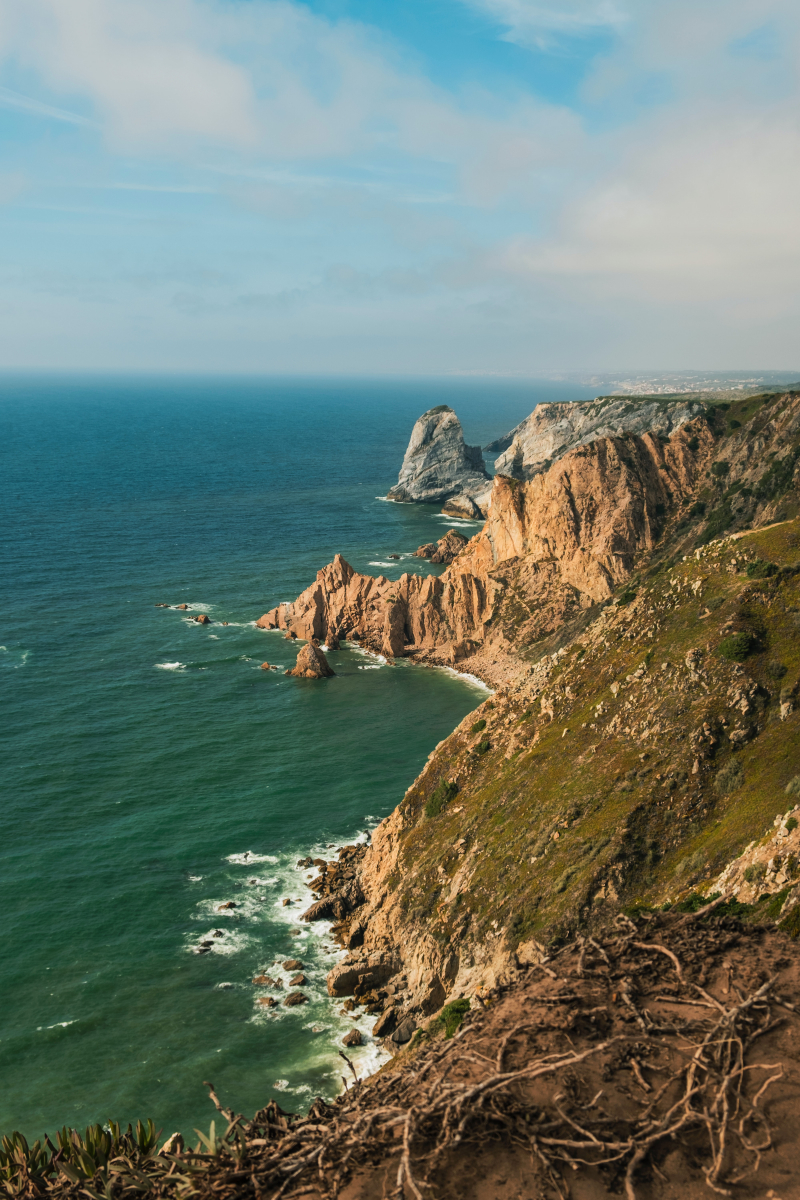
Photo by Julia Solonina on Unsplash -
The island of Comino (formerly known as "Ephaestiais"), which is barely 3.5 square kilometers in size, is home to this wonderful natural Maltese jewel. It is the smallest and least inhabited of the three islands that make up the Maltese archipelago. Comino is only home to three people and has only one hotel, the Comino Hotel. The only way to explore Comino is on foot or by 444, although just a few vehicles are permitted on the island. The landscape is rocky and dusty, although it is mostly level. The Blue Lagoon in Malta might be one of the most underrated natural attractions in Europe.
Because the pool is in a volcanic zone, the water is heated. It has a depth of 200 meters. Icelanders drilled into volcanic rocks to collect incredibly hot water to power their towns, one of which being Reykjavik. The water in this lagoon is 40 degrees as it exits the power plant. The water is rich in blue algae, which gives it its beautiful color and, of course, its name.
The various wildflowers and herbs that adorn the land emit delightful smells that mix with the sea wind, giving you the impression that you are in nature's paradise. Aside from the Blue Lagoon, there are a few additional attractions on Comino, such as Maltese historic sites and secret coves. The three options for getting to Malta's Blue Lagoon are to take a boat ferry, a full day boat day trip/tour, or charter your own boat. The voyage along the Mediterranean is very breathtaking, passing by coastal cliffs and caves.
Location: Iceland
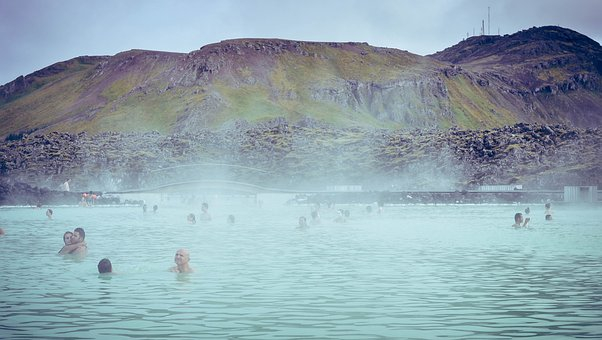
Photo by Veronicatxoxo on Pixabay 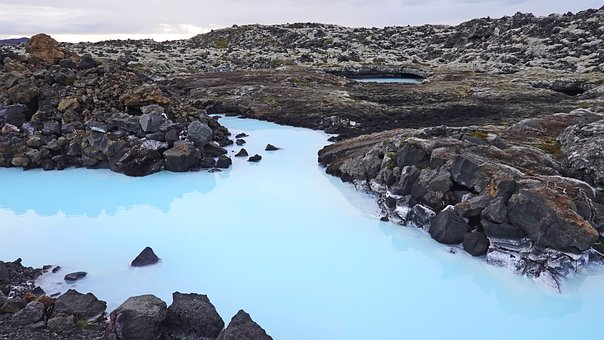
Photo by dassel on Pixabay -
Imotski is a picturesque tiny village in the Dalmatian interior, located on the northern side of Biokovo mountain. It is famed for its two karst lakes, a real natural phenomenon - Blue Lake, frequently nicknamed the "pearls of nature". Blue Lake lies on the outskirts of town, and it was named for the hue of the water, while Red Lake was named after the color of the surrounding rocks.
It is located in a deep pit that was most likely produced by the collapse of an underground cave. The lake's depth from the upper rim is around 200 meters, and its dimensions are 800 by 500 meters. The water depth changes depending on the season, as it might reach the southern rim in the winter and spring and totally evaporate during the scorching summer days. When the lake totally dries up, the residents build an improvised football field and play football. The lake is also a popular trekking area. A stone route going to the lake was made in the early twentieth century so that people could easily get down during the summer days to sunbathe and swim.
The adjacent cliffs, some of which are more than 40 meters high, are ideal for diving. Topana Fortress, established in the 10th century, is positioned on a cliff above the magnificent Blue Lake, from where you may enjoy an excellent perspective. During dry springs, the fish can be seen in the springs in the area around the lake which is confirmation that the lake has underground connections with these springs.
Location: Croatia
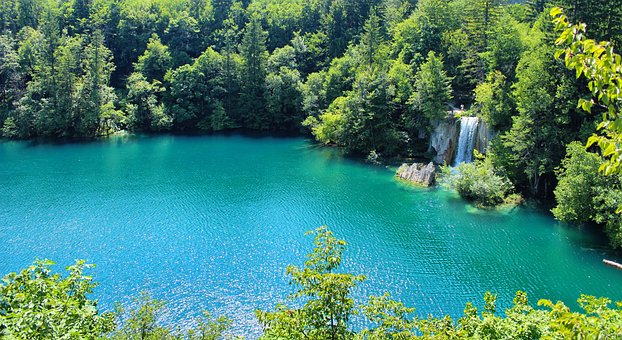
Photo by Waldo93 on Pixabay 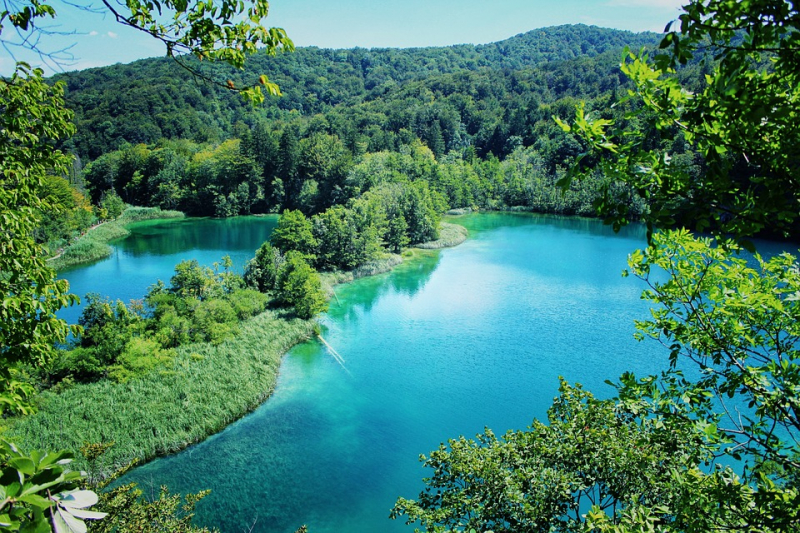
Photo by Waldo93 on Pixabay -
Swimmers float in a network of crystal-clear saltwater pools that reflect the azure sky off the coast of Porto Moniz on the northwestern coast of Portugal's Madeira Island. The natural salt ponds' tranquillity belies their tumultuous origin narrative. The Madeira archipelago, located southwest of mainland Portugal, was produced by volcanic eruptions on a huge hotspot beneath the eastern Atlantic Ocean. Lava initially reached the surface more than five million years ago, with frequent eruptions lasting until around 25,000 years ago.
Madeira's rugged mountains and valleys were sculpted by volcanoes and erosion during inactive eras. During the most recent period of volcanic activity, lava poured down through an existing valley and out to sea where Porto Moniz is now, cooling and hardening into the volcanic rock that now forms the pools' walls. Ocean water rushes over the rocks, replenishing the pools and occasionally taking fish and shrimp with it. High winds can cause waves to smash over the granite walls, but in calm weather, the pools provide a tranquil bathing experience for people who want to swim in the ocean without having to battle the breakers. The facility also has a children's pool and play area, and it is wheelchair accessible.
Bathers will find all the amenities they need for a relaxing beach day, including parking, changing rooms and lockers, a snack shop, and lounge chairs and sunshades for hire. There are lifeguards on duty, as well as a first aid station. Hikers may also walk inland on the beautiful Levada da Ribiera da Janela route from Porto Moniz.
Location: Madeira, Portugal
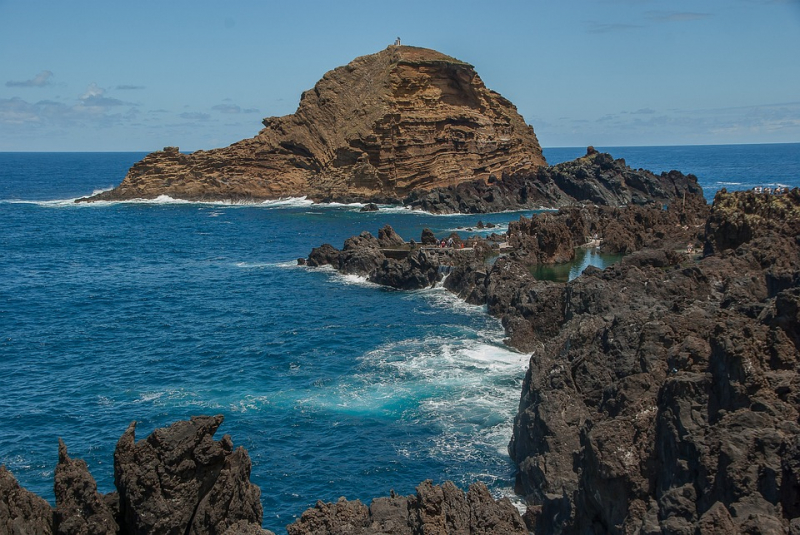
Photo by jackmac34 on Pixabay 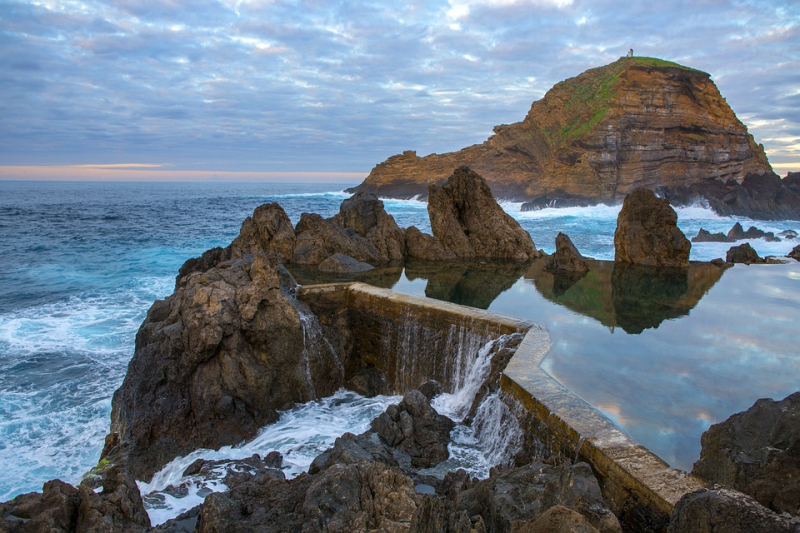
Photo by Olga_Fil on Pixabay -
The Pamukkale travertines may be seen from practically anywhere in the hamlet. A massive snowy mountain appears out of nowhere in the middle of verdant, undulating hills. It's as if something from the polar ice caps has been dumped in the heart of Western Turkey's rural farmlands. When you approach closer, you see it's a white rock mountain built of calcite terraces that were once filled with warm thermal water. It genuinely is a natural wonder, and it appears so out of place that you can't believe it's not man-made. These are the kinds of vistas that keep us traveling the world year after year.
The Romans enjoyed it here, erecting an amphitheatre and baths around the travertines. You may still visit the remains today and wander about the old columns and fragments after you've had your fill of the pools. Despite the safety concerns that many people have about visiting Turkey at the time, it is no wonder that Pamukkale remains quite popular. There will be buses no matter what time of year you visit. Everyone comes to view the slope of turquoise lakes that appear to be right out of a fairy tale. There are around 8-10 pools that are maintained such that there is always water in them so that you may bathe, paddle, and enjoy the wonderful scenery surrounding them. Because the water is only warm at the top and bottom pools and chilly everywhere else, most people will cluster in the warm pools.
Location: Turkey
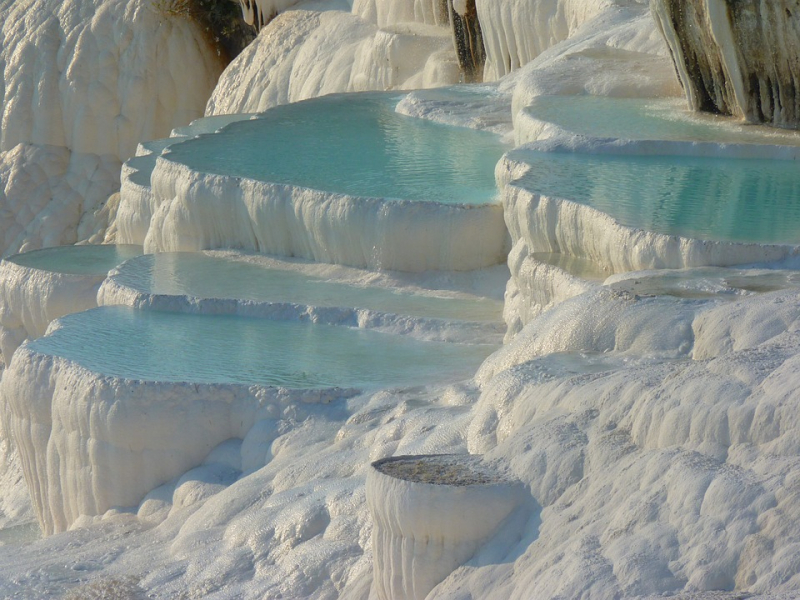
Photo by LoggaWiggler on Pixabay 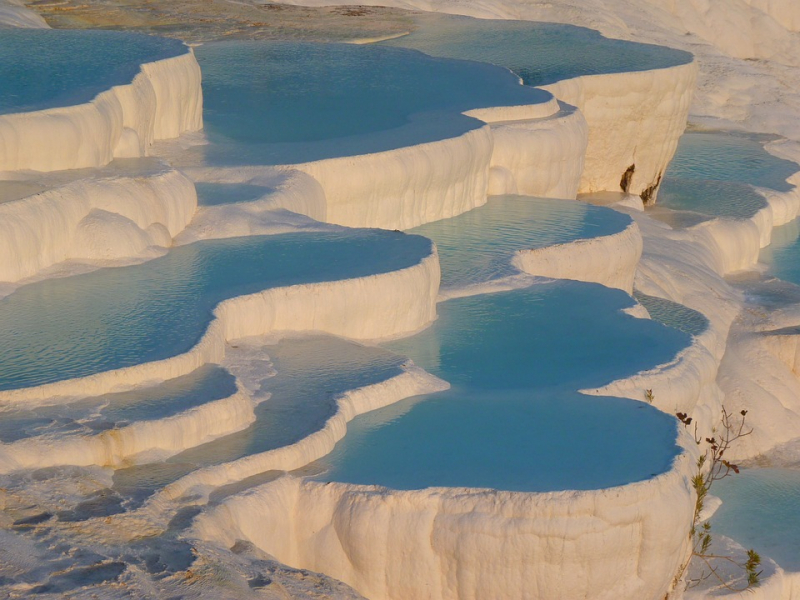
Photo by LoggaWiggler on Pixabay -
Skye's wild islands await you! The enchanting Fairy Pools, named after fairy tales and Scottish folklore, may be found here. The stream that flows down from the Cuillin Mountains produces a beautiful pool of vibrant hues. The Fairy Pools is located in Glenbrittle on the Isle of Skye and are open to the public at any time. The Fairy Pools are stunning rock pools of transparent mountain spring water fed by a succession of Cuillin Mountains waterfalls. Many tributaries of the River Brittle flow down from the Cuillin into the Glen, including the Fairy Pools, a popular walking destination.
The Fairy Pools' ecosystem is home to a variety of species, including red deer, rabbits, and sheep. A significant number of birds live in the neighborhood as well. Crows, ravens, and gulls abound in the region, as do smaller birds including meadow pipits, turnstones, common ringed plovers, grey herons, dunlins, and curlews. The physical topography is mostly rocky, with a few swampy patches here and there. Because the pools are supplied by mountain streams, the water in the region is often frigid.
Visitors may take the 2.4km gravel route from the car park to the Fairy Pools, which is flanked by grass, heather, peat, and rocks, or they can go farther up the trail and explore some of the smaller pools that lay ahead. The water at the Fairy Pools is crystal clear, making it ideal for any brave swimmers courageous enough to enter the chilly waters. It is recommended that you bring a wetsuit for this activity because these beautiful rock pools can be chilly.
Location: Scotland
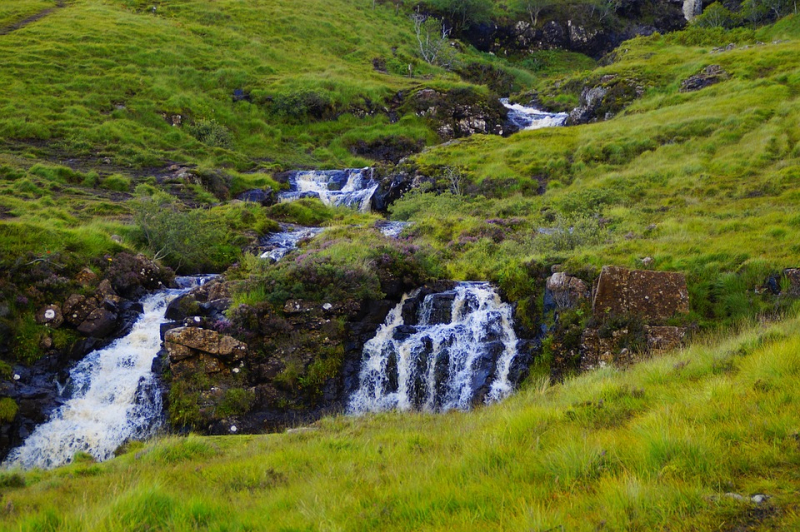
Photo by Efraimstochter on Pixabay 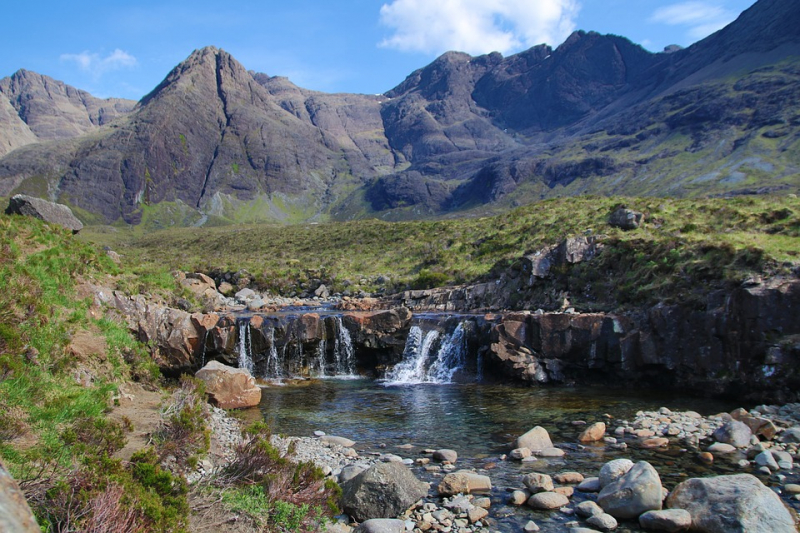
Photo by tifari on Pixabay -
By small boat, you may visit what appears to be a paradise on the island of Bisevo: the famed Blue Grotto, where the sun reflecting makes the sea even more intensely blue. This limestone grotto, accessible only by sea, has an underwater aperture that allows in sunlight as noon approaches throughout the summer months. For more than two hours, beams fly through the water in a stunning pattern, showering the cave in brilliant blue light.
The Blue Cave, discovered in 1884, is located on the eastern point of Bievo, directly across from Vis's main resort of Komia. Komia, home to famed lobster restaurants and the island's most notable bar center, is littered with travel firms, many of which sell day trips to Bievo on boards surrounding the harbourfront. Vis, which was a closed military installation until Croatian independence in 1991, was late to modern-day tourism. Bievo's popularity is a relatively new phenomenon.
Tours are also organized from the principal resorts on the islands of Bra and Hvar, with departures timed to arrive in Bievo after 11 a.m. Tourists skip breakfast in favor of a full day of activities that includes lunch and an afternoon on the beach near the cave. Companies that organize an easy there-and-back arrangement for Bievo, even from neighboring Komia, are becoming increasingly rare. All-day excursions are the norm.
Location: Croatia
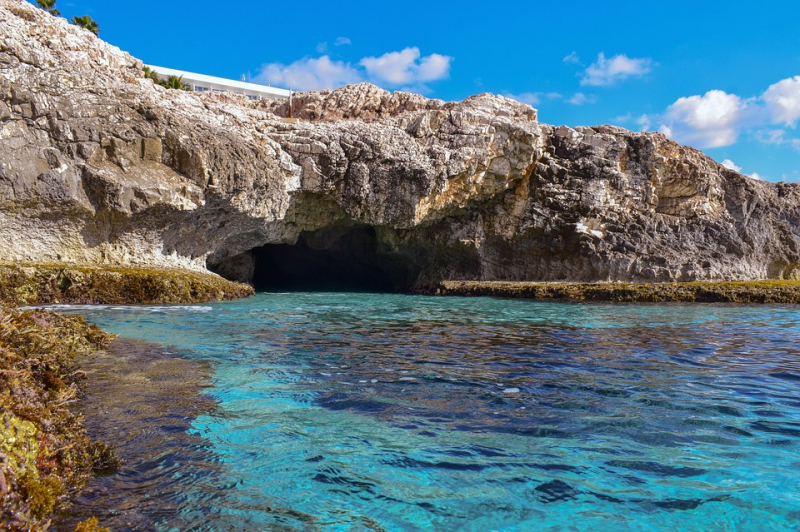
Photo by dimitrisvetsikas1969 on Pixabay 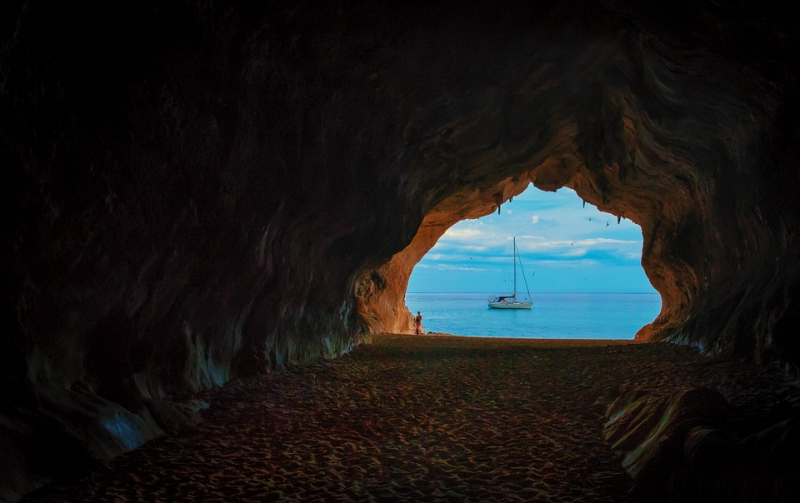
Photo by LN_Photoart on Pixabay











